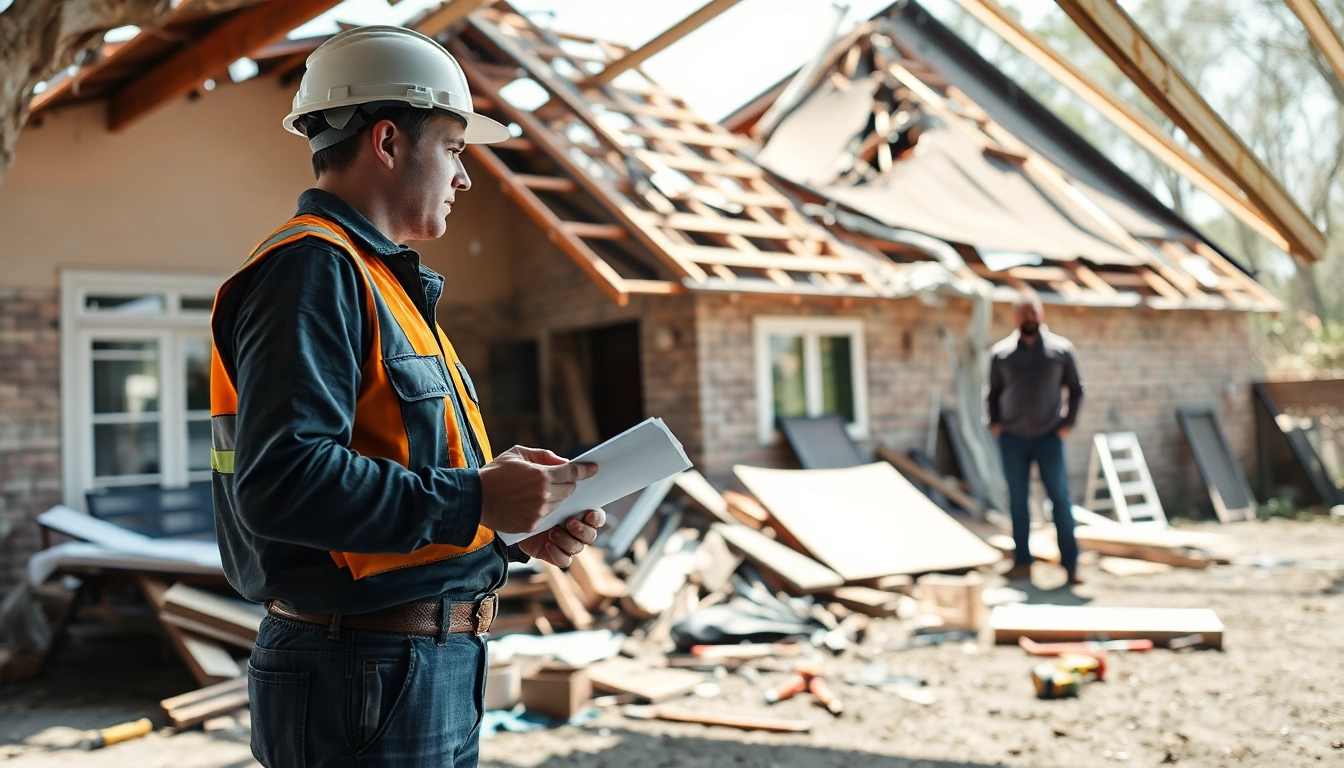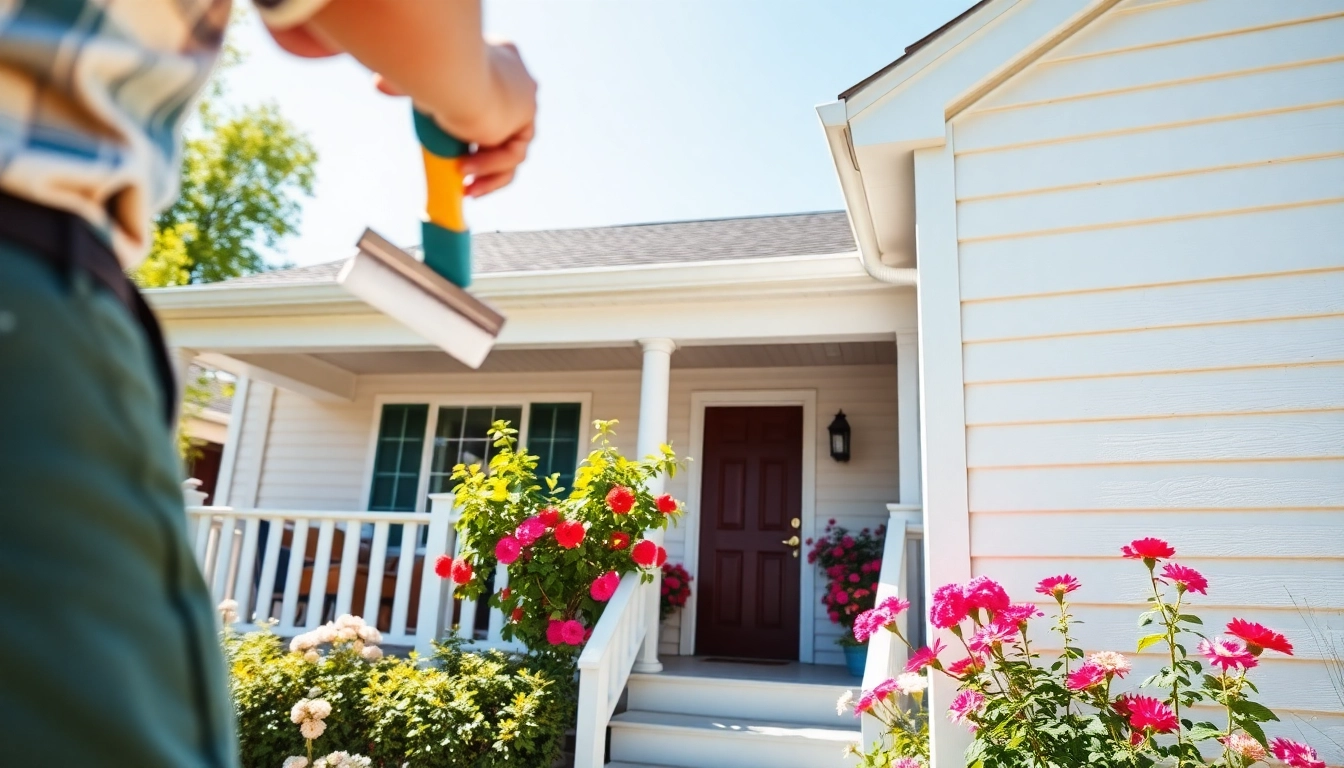Understanding Emergency Property Repair
Definition and Importance of Emergency Property Repair
Emergency property repair refers to urgent fixes needed to address critical failures in a home’s infrastructure, including plumbing, electrical systems, roofing, and HVAC components. These issues often arise unexpectedly and can pose serious risks to safety, health, and property integrity. The significance of promptly addressing these repairs cannot be overstated: delays can result in exacerbated damage, financial loss, and hazardous conditions.
Effective management of Emergency property repair is essential to maintaining a safe living environment, minimizing repair costs, and preserving property value.
Common Types of Emergency Repairs
Understanding the most prevalent types of emergency repairs is crucial for homeowners. Common issues include:
- Roof Leaks: Water intrusion from a damaged roof can lead to extensive interior damage.
- Plumbing Emergencies: Burst pipes, overflowing toilets, or failing hot water heaters require immediate attention to prevent flooding and water damage.
- Electrical Failures: Exposed wiring, faulty outlets, or circuit breaker issues can lead to safety hazards, including fires.
- HVAC Failures: A broken heating or cooling system can create uncomfortable or unsafe conditions, particularly during extreme weather.
- Structural Damage: Issues such as foundation cracks, fallen trees, or damaged walls can compromise the integrity of the home.
Consequences of Delaying Repairs
Postponing necessary repairs can yield severe consequences. First and foremost, there’s the risk of increased costs due to the deterioration of the initial problem. For instance, a small leak can escalate into a significant mold issue if left unaddressed. Additionally, delays may lead to health hazards, such as exposure to toxic mold or electrical risks. Moreover, insurers may deny claims for damages if homeowners do not act promptly, leading to further financial implications.
Identifying Emergency Situations
Recognizing Major Warning Signs
Being able to identify emergency situations is essential for prompt action. Warning signs often include:
- Water stains on ceilings or walls indicating possible leaks.
- Unusual sounds from plumbing or electrical systems.
- Unpleasant odors, such as gas or sewage smells.
- Visible mold growth or structural buckling.
These signs prompt immediate assessment to determine the need for professional assistance.
Assessing Damage Severity
Once warning signs are recognized, assessing the severity of damage becomes necessary. Homeowners should evaluate:
- The extent of water damage through inspection of affected areas.
- Visible deterioration in structural elements, such as beams or walls.
- The functionality of electrical systems by checking for power fluctuations.
This assessment will inform priority levels and the urgency of repairs needed.
When to Call for Help
Not every issue requires immediate professional intervention. However, it’s crucial to recognize when the situation exceeds DIY capabilities:
- When damage threatens personal safety, such as exposed electrical wiring or gas leaks.
- For plumbing issues that may lead to substantial flooding.
- Structural concerns that affect the home’s stability.
In such cases, contacting emergency repair services is warranted.
Steps to Take During an Emergency
Immediate Safety Precautions
During an emergency, taking immediate safety precautions is paramount. These can include:
- Shutting off utility services, such as water or electricity, if safe to do so.
- Evacuating the premises if the situation poses a health risk.
- Wearing safety gear to protect against hazards like falling debris or hazardous materials.
These actions can prevent injury and reduce further damage.
Contacting the Right Professionals
Choosing the right emergency repair services is essential. Homeowners should look for:
- Licensed and insured contractors who specialize in the type of repair needed.
- Established companies with positive reviews or testimonials.
- Emergency services that can provide timely responses, ideally within a few hours.
Research before an emergency can save you time and stress when it arises.
Documenting Damage for Insurance
Proper documentation of damage can streamline the claims process with insurance companies. Important steps include:
- Taking detailed photographs of the damage from various angles.
- Keeping records of any communications with repair professionals.
- Listing all items damaged or affected by the emergency.
Thorough documentation ensures that all necessary information is available for filing claims effectively.
Financial Considerations for Emergency Property Repair
Understanding Repair Costs
The cost of emergency property repair can vary significantly depending on the issue at hand. Factors influencing costs include:
- The complexity of the repair and the materials needed.
- Local labor rates and the urgency of the service required.
- Potential secondary damages that were not initially visible.
Estimates should always be obtained before any repair work begins to ensure transparency and affordability.
Funding Options and Assistance Programs
Homeowners facing significant repair costs may consider various funding options, such as:
- Home equity loans or lines of credit, which allow for borrowing against the home’s value.
- Personal loans, which can be obtained from a bank or credit union.
- Government assistance programs designed to support eligible homeowners.
Researching these avenues can provide relief during financially stressful moments.
Insurance Coverage for Emergency Repairs
Homeowners’ insurance policies often cover certain types of emergency repairs; however, policy specifics can vary widely. Considerations include:
- Understanding what is included in your policy and reporting damages promptly.
- Keeping in mind deductibles that can impact out-of-pocket expenses.
- Checking for any exclusions or limitations related to specific repairs.
Regularly reviewing insurance policies can help ensure you are well informed during emergencies.
Best Practices for Long-Term Solutions
Conducting Routine Maintenance Checks
Preventive measures can save homeowners significant time and costs over the years. Regular maintenance checks should include:
- Inspecting roofs and gutters for signs of wear or blockages.
- Examining plumbing fixtures for leaks or rust.
- Checking the performance of HVAC systems before extreme weather.
Creating a maintenance schedule can help keep problems at bay.
Investing in Quality Repairs
When repairing, opt for high-quality materials and reputable contractors, as cheaper, temporary fixes may lead to repeated emergency repairs. Investment in quality can yield:
- Increased durability of repairs which reduces the need for future fixes.
- Better overall safety standards, including the use of reliable materials.
- Improved energy efficiency, leading to lower utility bills.
Long-term thinking can protect your home and finances.
Preparing for Future Emergencies
Preparation is key to managing future emergencies effectively. Homeowners should:
- Establish an emergency fund dedicated to home repairs.
- Create and maintain a contact list of trusted repair professionals.
- Stay informed about regional climate and potential natural disasters to anticipate needs.
Proactive measures will enhance readiness and peace of mind during emergencies.



